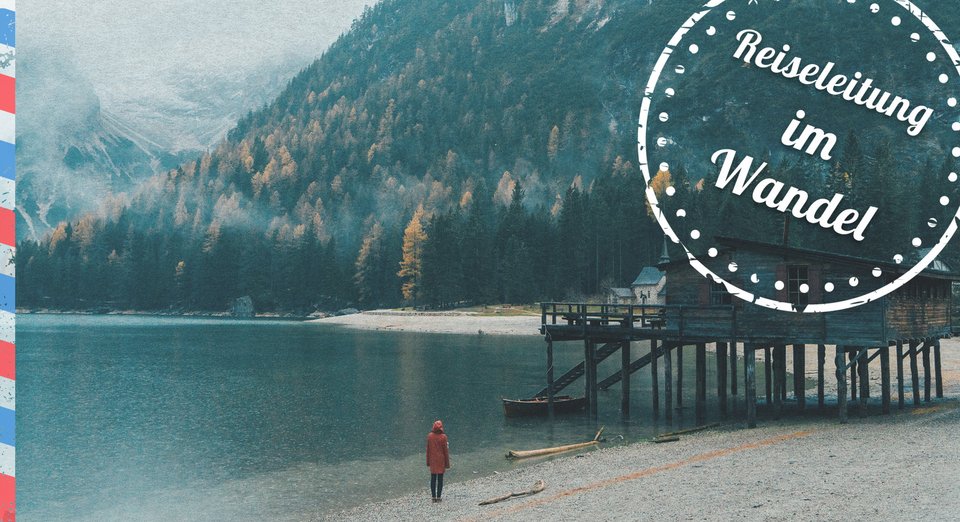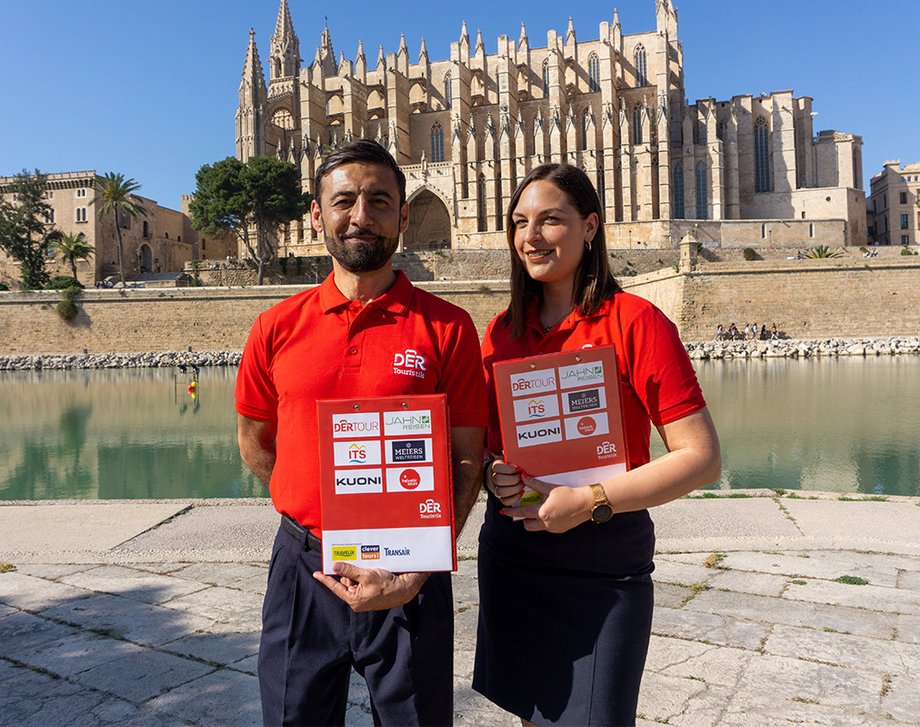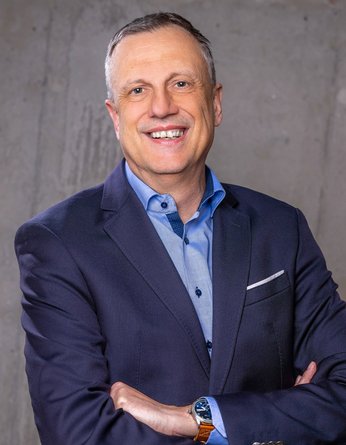
DER Travel and Tourism's incoming agencies, which organise trips and look after guests locally all over the world, were also severely affected by the pandemic. Guests have realised just how valuable local support is during the pandemic. How DER Travel and Tourism survived the crisis in the destinations, is mastering the current restart and what the growing digitalisation in the destination has to do with Sustainability: This is what Dr Klaus-Ulrich Sperl, Chief Executive Officer DER Travel and Tourism Destination Management Companies (DMC), and Jürgen Heiss, Managing Directors DER Travel and Tourism Destination Service (DTS), tell us in an interview with one.
It's jinxed. When coronavirus shook the world around two years ago, our colleagues at DER Travel and Tourism had to reduce their tour guides and destination presence to a minimum. Now, two years later, when travel is possible again and people are hungry for holidays, it's time to mobilise local support again. Tour guides are therefore more in demand than ever.
 Klaus-Ulrich Sperl
one: Dr Sperl, Mr Heiss, you are responsible for a network of DER Travel and Tourism destination agencies in 26 countries and 58 destinations. How did you get through the coronavirus crisis in terms of staffing in the holiday destinations?
Klaus-Ulrich Sperl
one: Dr Sperl, Mr Heiss, you are responsible for a network of DER Travel and Tourism destination agencies in 26 countries and 58 destinations. How did you get through the coronavirus crisis in terms of staffing in the holiday destinations?
Klaus-Ulrich Sperl: The course of action at the beginning of the pandemic was clear: cut costs, including in the destinations, as quickly as possible and as well as possible, but without destroying the staff infrastructure. We had to find ways and means to keep the flame burning, but we could no longer afford a fire.
one: In other words, you tried to keep as many employees as possible on holiday - and on standby - even during the coronavirus crisis?
Jürgen Heiss: Exactly. We left our core team completely on board. We said: we'll get back to work at some point! We always prepared ourselves to be able to go back to a destination within 72 hours to look after guests on site. This was important, as travellers had a lot of questions and uncertainties during this time, which we were able to help with.
one: How did guests react to the change in customer service on site?
Klaus-Ulrich Sperl : We could see from the guests' reactions that we had obviously acted with good judgement. We often received feedback from the destination - and by no means just from our own customers: 'Oh look, there are still tour guides! How nice that you are here!
 Supporting guests in word and deed and sometimes providing unconventional help: the tour guides in the destination area
And that was more important than ever: during the pandemic, there was a much greater need for information than usual. Where can I get a PCR test, when do I have to have one, do I have to wear a mask on the plane or not? There was a lot of uncertainty, as the rules changed on a weekly basis in some cases and different requirements were set depending on the destination.
Supporting guests in word and deed and sometimes providing unconventional help: the tour guides in the destination area
And that was more important than ever: during the pandemic, there was a much greater need for information than usual. Where can I get a PCR test, when do I have to have one, do I have to wear a mask on the plane or not? There was a lot of uncertainty, as the rules changed on a weekly basis in some cases and different requirements were set depending on the destination.


 Jürgen Heiss
one: Suddenly, the tour guides had to take care of completely different things for the guests than usual...
Jürgen Heiss
one: Suddenly, the tour guides had to take care of completely different things for the guests than usual...
Jürgen Heiss: Absolutely. We looked after the customers in lockdown or quarantine, we went shopping for everything from toiletries to cigarettes. They weren't allowed out - whole families were stuck in hotels for up to two weeks in 2020 and 2021, and we went to the supermarket with shopping trolleys. Our work was suddenly no longer just at the airport, or selling excursions and the like, but it was full support. DER Travel and Tourism was on site - this set us apart in the market and positioned us close to the customer.
one: Do you think the guests will remember such an operation?
Klaus-Ulrich Sperl: I hope and hope that this has had a positive impact on the image of DER Travel and Tourism and that it has also helped us to retain our guests.
one: The biggest coronavirus crisis now seems to be over. And you have to really get going again in the holiday destinations...
Klaus-Ulrich Sperl: Yes, the big challenge now is to expand the team again in a very short space of time. Because the volume of guests in some areas is bursting at the seams, and in terms of incoming bookings, we are even above pre-crisis levels in some cases. And the guests also want to be looked after!
Jürgen Heiss : At the moment, many newcomers are applying: from hairdressers to opera singers and painters. Last week we took on an aromatherapist.


one: What are you doing to be attractive to applicants?
Jürgen Heiss: In fact, the battle for the best minds among competitors is currently enormous. In addition to salary, for example, technical equipment also plays a role. We are doing a lot here: all of our tour guides have been equipped with a new smartphone this year, and almost all of them will have a tablet from July.
In the long term, however, our plan is to recruit new employees through training. So far, there is no training programme for tour guides. We want to develop a concept - together with our organiser. Because that's the way it is: Most people don't want to remain tour guides forever, but want to move to the head office at some point. Why shouldn't it be possible to combine the two? Like this: We provide training in the destination, which gives us perfect local knowledge, among other things. If you know Greece and Spain, you can already contribute a lot to revenue. So why not go on to work in a Dertour travel agency or service centre? We want to develop something - for ourselves, and then give people a perspective.
 The big challenge at the moment is to expand the team on site again
The big challenge at the moment is to expand the team on site again
one: The dertouristik-reiseleitung.com website has been around for about a year. So is digitalisation also an issue for work in the destinations?
Jürgen Heiss: Absolutely. In 2021, we set up our own website, dertouristik-reiseleitung.com, within eight weeks with the help of a very tech-savvy colleague and went live with Mallorca, the most important destination, on 8 May. By the end of 2021, we had launched 16 of the most important destinations. This allowed our guests to do everything on the website that they used to do in person: Book excursions and hire cars, check transfer times and flight times.
We also set up a newsflash so that customers could be informed immediately about current events, changes to coronavirus regulations, etc. thanks to the organiser's professional crisis management via an SMS link. The link led to our website, where we had also set up informative podcasts together with the crisis management team.


The response showed us just how important this newsflash was: the podcasts were accessed up to 7,000 times within an hour. Now we no longer had to hand out welcome envelopes with pliers....we posted QR codes everywhere - whether in the hotel or on the bus. With success: from the start at the beginning of May to mid-December 2021, we had five million page views.
one: What are your further plans for the digitalisation of travel management?
Jürgen Heiss: We want to continue to be hybrid, digitalisation is progressing. We are currently learning a lot and our website is becoming more and more successful and better and better. In May alone, we already had over 100,000 visits. And we will have 20 destinations online by the end of the year. Customers have learnt what is possible digitally.

one: But isn't personal contact in the destination irreplaceable - digitalisation or not?
Jürgen Heiss: Absolutely. That's why the combination is crucial. In June, we will be gradually introducing some new features. Our guests in the destination will then be able to open a calendar on our website and "book" their personal tour guide for a virtual or audio chat. This works for questions or complaints: If the room doesn't have a sea view, for example, the customer shows us the situation on site live with their mobile phone camera and we can respond immediately. It's all very straightforward and on demand - in other words, we no longer have fixed 'consultation hours' with the tour guide, but rather when there is a real need.
Another new feature is that we send our guests their transfer times in the destinations by e-mail 48 hours in advance after they have registered on our website. Why the lead time? Then you can order a late check-out at the hotel or, if the pick-up time is already at 6 a.m., breakfast, for example. And we send out an update 24 hours in advance, because sometimes the airlines don't announce the final flight times until then.
And last but not least, we are now gradually starting to shoot films with drones during our most beautiful and favourite trips. The first destination is Mallorca, followed by Crete.
In addition, in the first destinations, our local tour guides will introduce themselves personally in short videos and draw attention to our guest service and our services.
one: Dr Sperl and Mr Heiss, thank you for talking to us.

Sustainability is an important aspect of digitalisation in the destinations.
Take Tenerife, for example: on the Canary Island alone, DER Travel and Tourism saves around 60,000 sheets of A4 paper per season.
There are around 250 hotels in the entire DER Travel and Tourism portfolio on Tenerife. By March 2020, around 130 information folders and a further 130 return folders had been placed in the hotels for DER Travel and Tourism guests. There are 70 sheets of paper in each information folder and ten sheets in each return folder.
In addition, destination information brochures were produced every two years. This content is now integrated into the destination websites on dertouristik-reiseleitung.com.
For the example of Tenerife, this means the following additional savings:
- 40.000 brochures with a page count of 84 pages, all in colour
- Printing costs (printing was done in Germany)
- Shipping costs (dispatch by ship)
